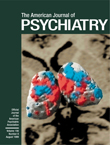This is a scholarly textbook that provides comprehensive chapters on the clinical presentation and biological treatment of the major psychiatric disorders of late life: disordered behavior and psychoses, affective disorders (depression and mania), anxiety disorders, sleep disorders, and dementias. The treatment chapters provide a setting for describing the major classes of psychotropic medications: antipsychotics, antidepressants, mood stabilizers, benzodiazepines, and cognition-enhancing agents. These chapters follow a similar format, with a thorough review of the medication class, excellent tables summarizing the available clinical trials, clinical vignettes, and well-organized bibliographies with suggestions for further reading. The chapters describing the various clinical conditions are also well done. I found Reisberg and Kluger’s “Assessing the Progress of Dementia” to be a particularly useful synthesis of this group’s work.
The clinical chapters, which are the meat of the book, are sandwiched between an excellent series of overview chapters and useful appendixes. One overview chapter, “Older Americans and Their Illnesses,” provides an epidemiologic and social context for the book’s focus. Another chapter, “The Aging Process and Response to Psychotropic Drugs,” reviews the effect of aging on neurotransmitters, drug kinetics, and dynamics. I found the chapter by Avron on “Drug Prescribing, Drug Taking, Adverse Reactions, and Compliance in Elderly Patients” to be particularly useful because it covers behavioral and regulatory issues not usually so well summarized in psychopharmacology texts.
This is an excellent reference book, useful both to practitioners and those in training. However, it is not a “how to do it” guide. Reviewing it highlights for me the gulf between evidence-based medicine and clinical practice. Especially in a subspecialty like geriatrics, the available controlled studies, which are thoroughly reviewed in this text, do not capture current clinical practice. For example, because of the availability of studies, the section on treatment of depression includes 25 pages on heterocyclic antipsychotics and fewer than 10 pages on SSRIs and other new antidepressants. Similarly, regarding mania there are seven pages on lithium and only one each on valproic acid and carbamazepine. I know these ratios do not reflect the way I prescribe these agents and probably are not reflective of the author’s clinical practice.
How to integrate more clinical wisdom into such a scholarly text remains an intriguing question. The clinical vignettes help; addition of reviews of available consensus guidelines and even “editorializing” by the author, possibly in a special section of each treatment chapter, might also help.

